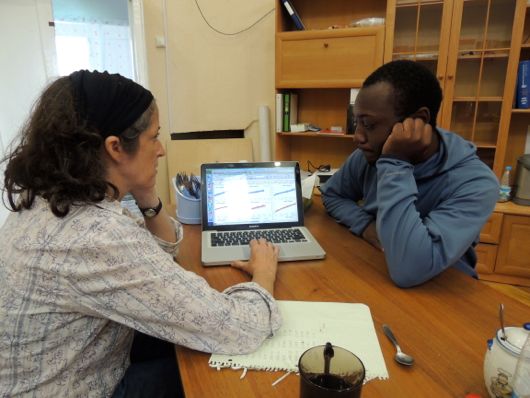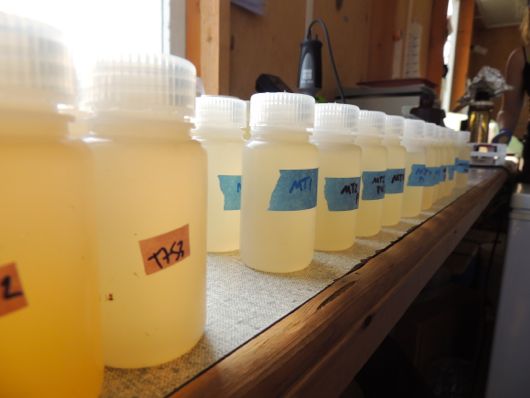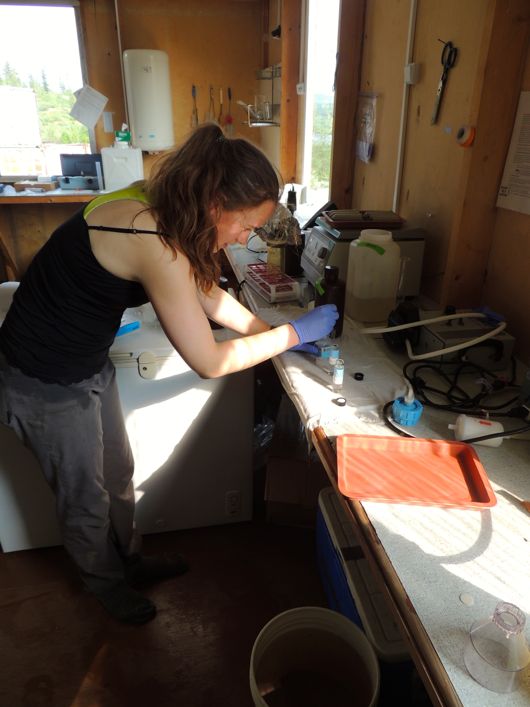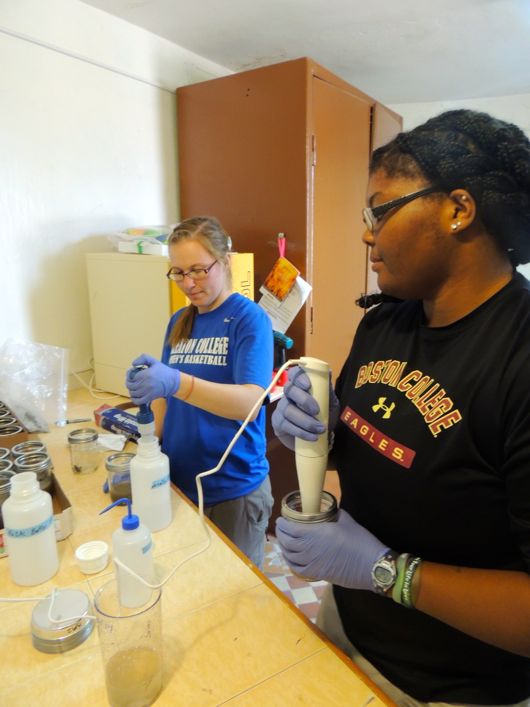Since we have returned form the tundra the core students have been working endlessly on preparing their samples and collecting the various measurements in the laboratories at the station. It’s funny but several weeks ago, when we first arrived at the station in Cherskiy, we felt like we were in a remote and unfamiliar place that had us on edge just a bit. When we did return on the barge after almost two weeks of work in the tundra the station had taken on a much more homey and civilized feeling. However, the core students had become so close during their time in the tundra that no one left the barge until long after we had docked. It’s great to see them all working together and supporting each other with the projects.
Nigel has worked through his first round of soil samples from the ground squirrel plots. He has been measuring for carbon dioxide change in the soils from the burrows compared with those further away from the burrows. The Polaris faculty members have been working with the core students as they look at their results, organize their data, and determine what their next step will be. Nigel’s initial data looks good, and after speaking with Dr. Natalie they decide that they will run the next set of samples in the soils lab.

Dr. Natalie discusses data with Nigel to determine their next step.
At the same time, Megan and Julian are working in the wet lab on their water samples. Both are measuring dissolved gases in their samples to determine what interactions are going on between the water and the soil. In addition, Megan will be looking at how light helps to break down the nutrients in her water samples.

Julian’s water samples waiting to be measured.

Megan adds acid to her samples to stop microbial action.
Jess and Kenzie are working in the enzyme lab to determine how methane is produced in the wet tundra. They will be measuring methane amounts and looking at the process that causes both methane and carbon dioxide to be released into the atmosphere. For most of the students their lab time will take three or more days to complete. It’s a long process but everyone is excited to see what their data will tell them.

Jess and Kenzie mix their water samples for analysis.



